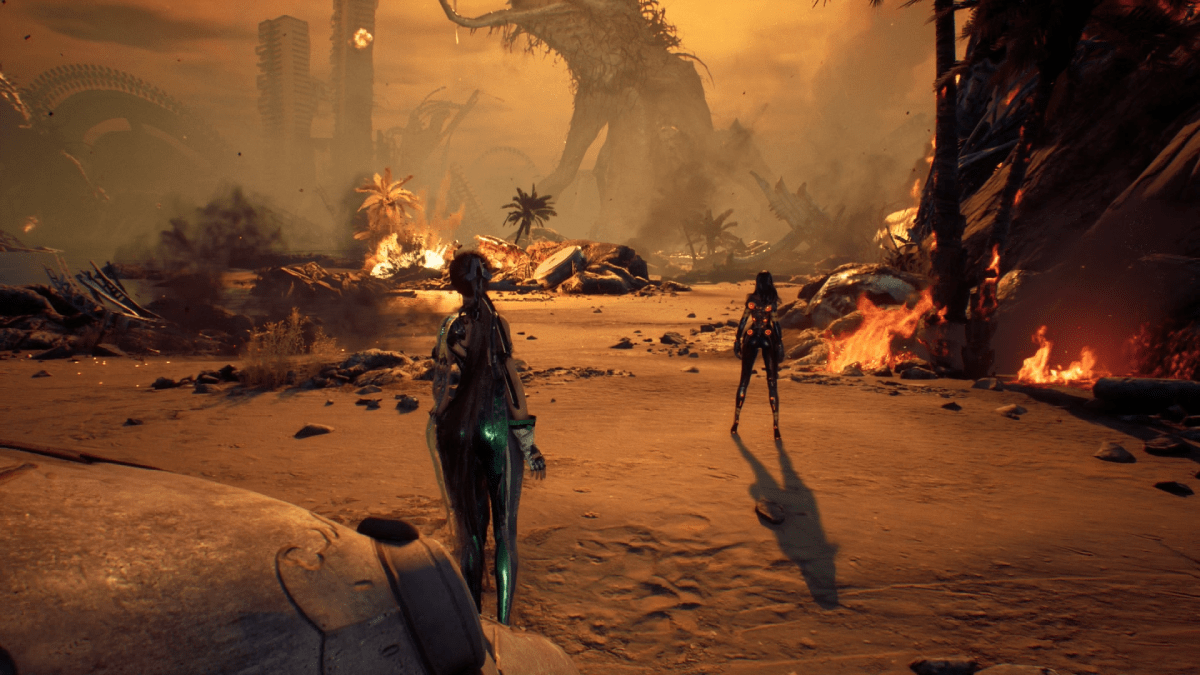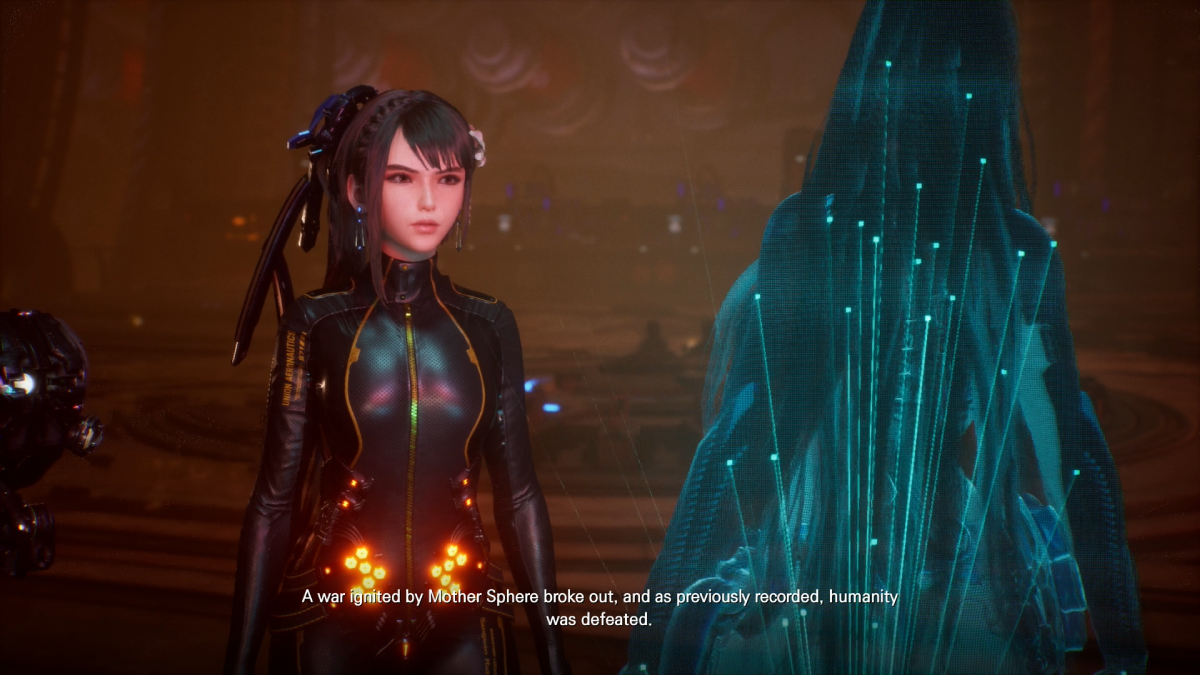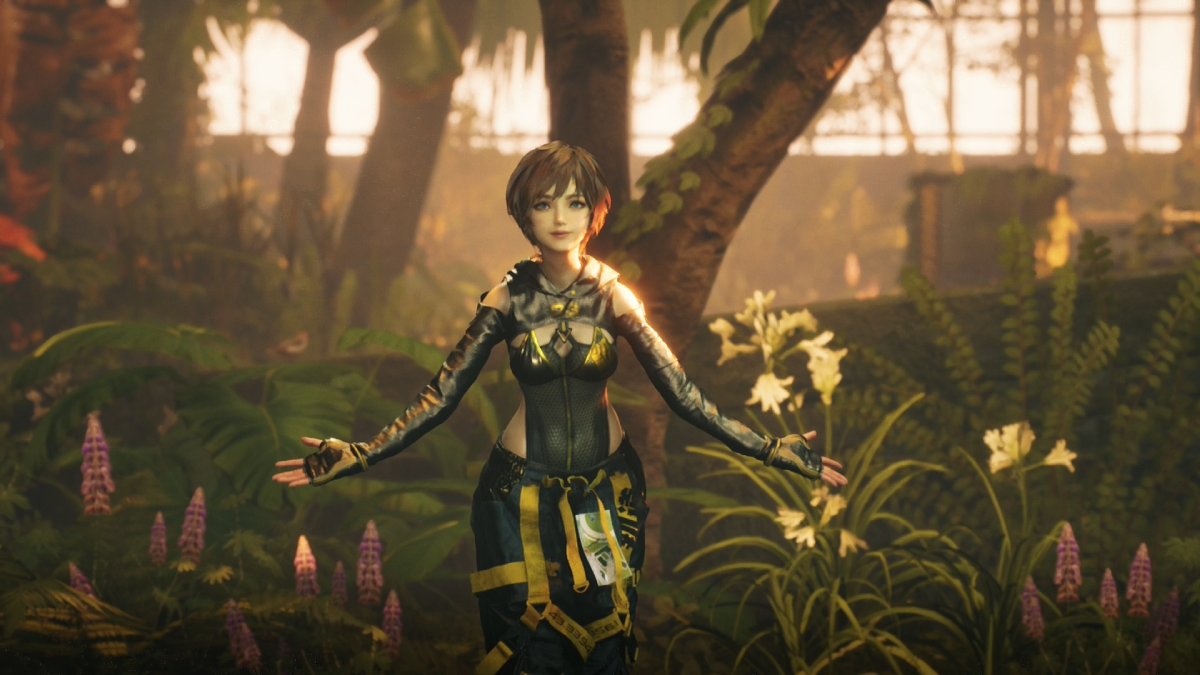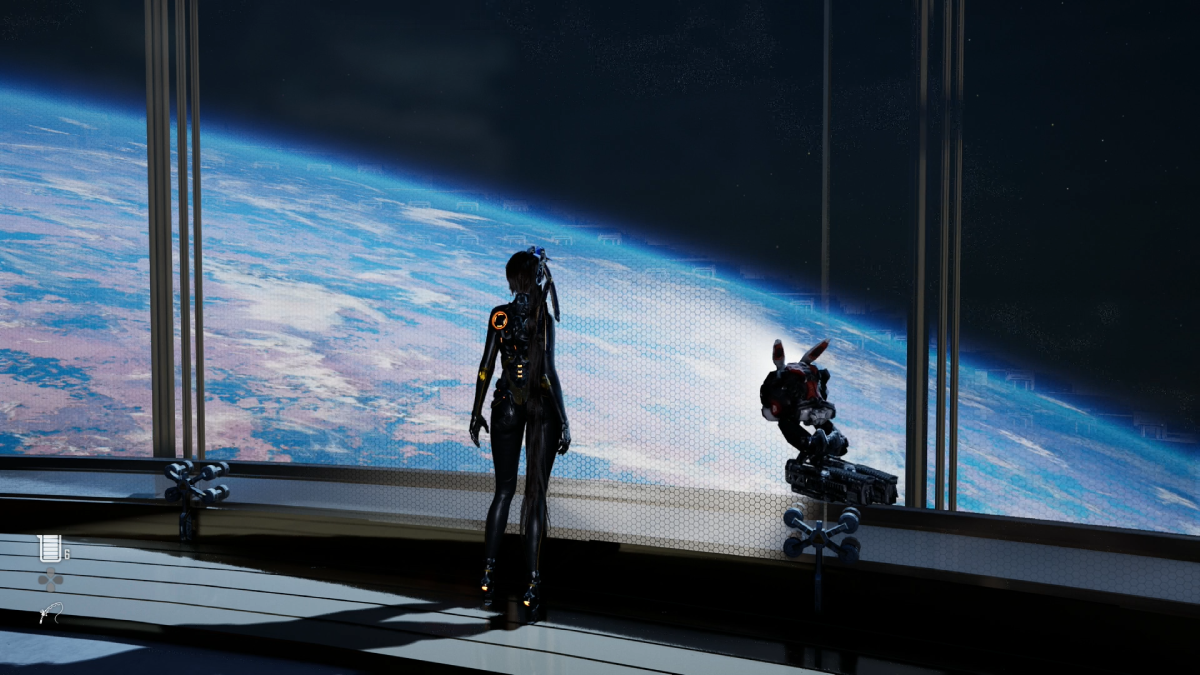This week saw the release of the NieR: Automata DLC for Stellar Blade. It brings new costumes, a new side quest and even some music to Stellar Blade. However, it also highlights just how much of NieR: Automata was in the game right from the start.
We all know the plot of NieR: Automata at this point. It stars 2B and 9S, two androids from a space station known as the Bunker, where an elite military force known as YoRHa operates. They are fighting a war against alien machines on behalf of humanity, seeking to revive Earth so it can be repopulated with humans who are living on a space colony.
Anyone familiar with this might spot something similar in the plot of Stellar Blade. You play as Eve, a soldier from a space station known as the Colony, where an elite military force known as the Airborne Squad operates. They are fighting a war against alien monsters named Naytibas on behalf of humanity, seeking to revive Earth.
You get it, it’s effectively the same setup. Both games depict a highly skilled female soldier emotionlessly following her orders and slashing her way through a series of threats on a ruined Earth. However, what I find fascinating about Stellar Blade taking such obvious inspiration is in how clumsily it handles it.

Before I begin, I should make it clear that Stellar Blade is one of my favorite games of the year. It’s a fantastic action game that I would recommend to anyone who wants something that sits neatly between a Soulslike and a Devil May Cry. However, it’s hard to look past its numerous plot issues. Issues that make the game feel like a cheap straight-to-video knockoff of NieR: Automata. Allow me to explain and be aware that I will be discussing spoilers for both games extensively.
While the two games share a central premise and similar big twists, there are notable differences in how they’re presented. For a start, you may note that I never referred to Eve as an android up above. This is because Stellar Blade goes out of its way to emphasize that Eve is human, not an android. A living, breathing human who merely serves a role for her fellow humans on the Colony. Any suggestion that she may be an android is just silly.
Until the game makes the big reveal that Eve is, in fact, an android. It’s supposed to be an existential shock to Eve’s whole being, something that make her (and the player) question everything they thought they knew. Which would be interesting if the game didn’t make it so obvious from the moment that she mentions her “body frame” and gets health checkups from a mechanic not a doctor. Plus anyone who played Automata is going to pick up on the plot similarities and assume this is the case anyway. After all, 2B and 9S are explicitly said to be androids from the outset. It’s not a twist there.

It’s not the only big twist that Stellar Blade manages to botch. Much like NieR: Automata, it turns out the war is futile, a lie told by powerful forces on the colony. However, while Yoko Taro used this as a way to highlight the futility of war and the dangers of blindly following propaganda, Stellar Blade is significantly less clear on what its message is.
Eve’s orders come from a rogue AI known as Mother Sphere, who had deemed humanity inferior to the androids it had created and waged a war. Humanity, in turn, accelerated their evolution and became the Naytibas to fight off the android army. The futility of war message feels a bit more lost in the many revelations. Instead, it becomes a story about divergent evolution, although I’m not 100% sure what exactly it has to say about the concept.
While Stellar Blade’s adherence to NieR: Automata does telegraph this reveal, even those without knowledge of that game’s story can see it coming. There are countless notes from fallen soldiers whose dying journal entries curse out Mother Sphere for being the true enemy, branding it a traitorous machine. I have no idea if these notes were subtle foreshadowing in the original Korean, but in English they’re massive sledgehammers that bonk you over the head with the truth way before it’s supposed to be known to you.

Stellar Blade has a plot riddled with problems like this. Your companion, Lily, gets rescued from a space pod early in the game as if she’s just arrived on Earth like Eve but is later shown to have a long-term hideout she lived in for years. The city of Xion is supposed to be the last hideout for humanity against both the androids and Neyibas, but everyone there is so obviously mechanical that I’m not sure who the population is supposed to be. Characters talk to Eve like they’ve known her for years despite the entire game taking place over a few days, which includes Eve meeting these characters for the first time.
Stellar Blade has one more twist for us though, and this one forces through some blatant symbolism while still struggling to land on a theme. Eve’s other companion, Adam, turns out to be a Naytiba that evolved back into being a standard human. I think. And now, in an attempt to rebuild humanity, he wants to fuse with Eve, combining the knowledge of the androids with the biology of the Naytiba to birth a new humanity. And yes, I rolled my eyes when I realized this is the entire reason that they have their on-the-nose names.
However, once again, I’m not entirely sure what the message is here – technology is bad as it destroyed humanity, but technology has also preserved humanity’s memories? The real monster is man (because man turned himself into a literal monster)? Also, Adam, you’ve watched me slaughter your fellow humans with impunity, what exactly is your plan here?

It’s all incredibly clumsy, especially when compared to its inspiration. Despite this, however, I found something strangely endearing about it all. There’s a lot of discussion about the appeal of the mid-tier game these days. The games that feature some great ideas buried in copious amounts of jank and yet manage to be utterly compelling. It’s the same appeal as a b-movie in cinema, where a badly made movie can become a cultural phenomenon for unintended reasons. A well-intentioned work with execution problems is infinitely more interesting than something bland but highly polished.
Stellar Blade is exactly one of these games. The combat and presentation are both excellent so the story being a mess ends up being part of the fun. I was fascinated by what it was trying to do and wanted to keep seeing where it managed to take its concepts. Quite often it went nowhere but the ride was still enjoyable. You can see where Kim Hyung-tae was enamored with Yoko Taro’s work and wanted to honor it in his own. While he may not have succeeded in emulating what made NieR: Automata great, the enthusiasm comes through all the same. And it even has Yoko Taro’s approval.
Which brings us back to the new DLC. It’s a lovingly crafted collaboration which, admittedly, mostly exists to give Eve more outfits. But there’s a reverence for NieR: Automata from Shift Up and a nod of approval of Stellar Blade from Square Enix (and some money for Yoko Taro). There’s a mutual respect, which I am fully on board with as a fan of both. Stellar Blade might be a clumsy attempt to imitate NieR: Automata but that clumsiness turned it into something strangely compelling in its own way.
Stellar Blade is out now for PS5.


Published: Nov 23, 2024 06:45 pm